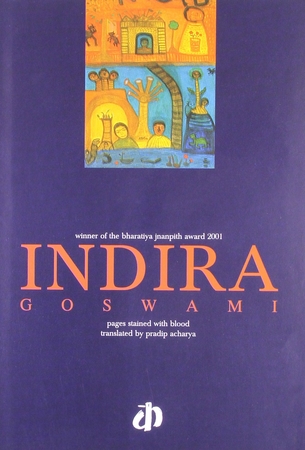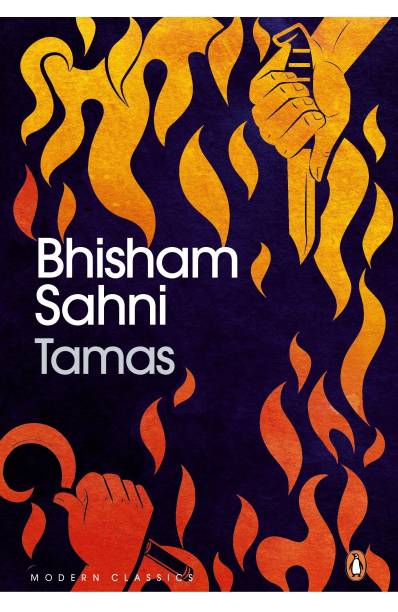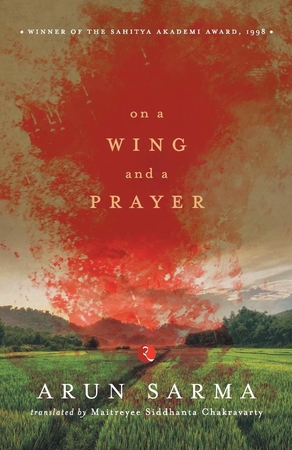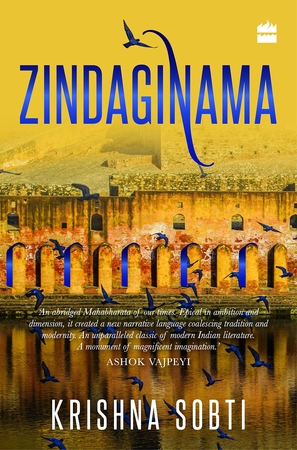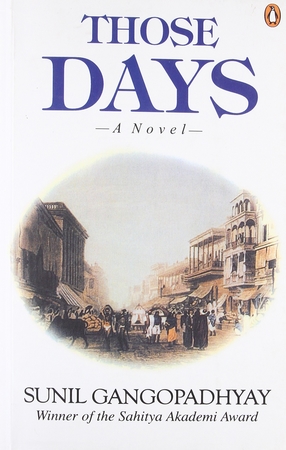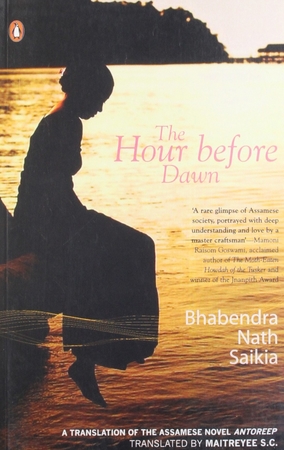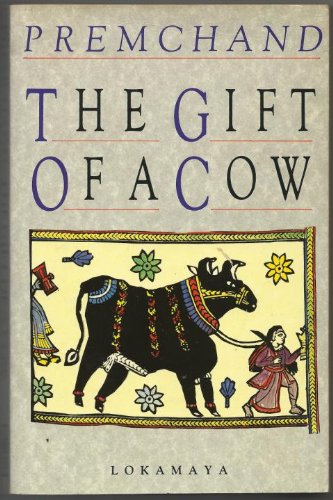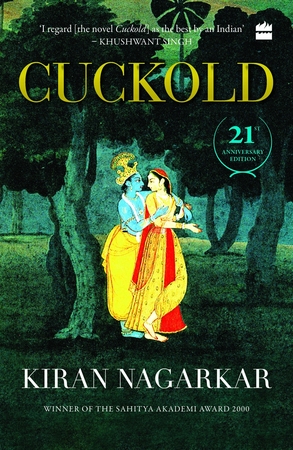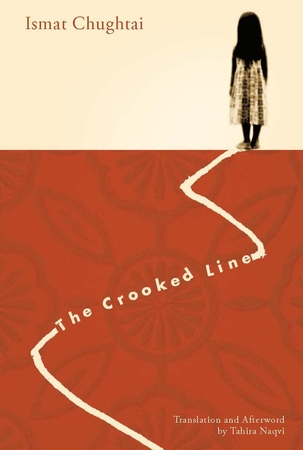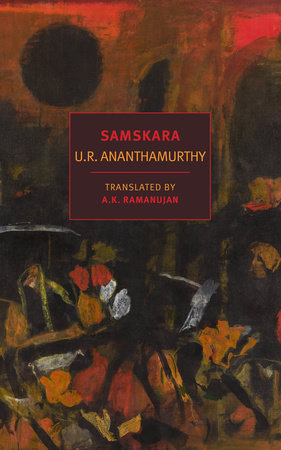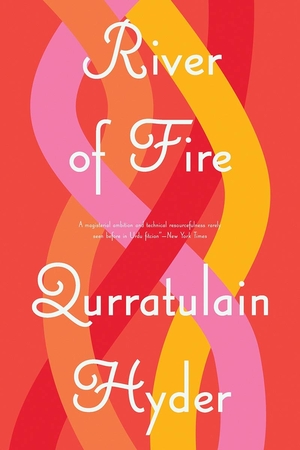Electric Lit relies on contributions from our readers to help make literature more exciting, relevant, and inclusive. Please support our work by becoming a member today, or making a one-time donation here.
.
When I wrote my first novel, The House With a Thousand Stories, I drew inspiration not only from great 20th-century novels like Toni Morrison’s Song of Solomon and important Indian English novels like Amitav Ghosh’s The Shadow Lines, but also from fiction written in the regional languages of India. My first language is Assamese but I also know how to read Bangla and Hindi. At home, we had a large stock of Bangla, Assamese, and some English books. The library I regularly visited had delicious thrillers written in Hindi that I devoured during summer vacations. All of these languages translated world classics, too. I read most of the great Russian novels in Assamese, some British and American classics by Twain and Dickens in Hindi, Bengali, and Assamese. Perhaps this is why every time a Western newspaper comes up with a recommended list of novels about India I find them insufficient. These lists always contain books written originally in English. Due to British colonialism, there is no doubt a large body of important Indian literary works that are read globally are written in English. But there is a problem here: only ten percent of India’s population knows English, and this group of people gets to represent India through their works.
Only ten percent of India’s population knows English, and this group gets to represent India through their works.
The rest of India’s population— who don’t have the privilege of learning English or away from the wealthy metropolitan centers of opportunities and thus English learning and discourse—read and write in one of the many official languages in India. India’s constitution lists 22 significant languages such as Assamese, Bengali, Bodo, Tamil, Gujrati, Kashmiri, Hindi, etc.—and that’s not including the thousands of dialects and tribal languages in which people write as well. These languages have a long and continuous written tradition. For instance, Assamese—my first language—has a literary tradition reaching back to the 5th century. With the arrival of print culture in the modern period, Assamese literature, like all other Indian literary cultures, flourished. A large amount of this was anti-colonial literature that led to the growth of nationalist consciousness and eventually contributed to British colonizers’ ejection from India.
The colonial administration systematically tried to replace these strong literary cultures with English. But they failed. A complex body of literature emerged from this linguistic violence on India’s native intellectual culture and subsequent resistance. Modern Indian literature draws nutrients not only from South Asia’s indigenous traditions, but also from literary cultures in the U.K., Europe, Latin America, Russia, China, and the United States (because the colonial administration taught English widely and thus we natives could now read in English).
Every Western list of books from India that doesn’t feature a single work written in one of India’s many languages reinforces colonial stereotypes.
Hence, every time a Western publication makes a list of books from India and doesn’t feature a single work written in one of India’s many languages, it reinforces colonial stereotypes and erodes the process of decolonization. It reestablishes the hegemony of the English language and wipes the rich local traditions that are longer and richer. The novels in this list—widely considered as modern Indian classics—attempt to challenge the Western stereotype that Indians primarily read in English or that Indian literature is written predominantly in English. In fact, in the last two or three decades, the reading public has shifted towards local consuming more and more literary works translated from Indian languages. I also belong to a generation of new writers from India who are comfortable writing in both English and a regional language. The future is at least bilingual, if not multilingual.
Pages Stained With Blood by Indira Goswami, translated from Assamese by Pradip Acharya
Set against the Anti-Sikh pogrom of 1984 that followed the assassination of the Indian Prime Minister Indira Gandhi, this is (as you might guess from the title) a bloody book. The novel follows the life of a young professor at Delhi University who witnesses the pogrom first-hand. The author, Indira Goswami, is one of the most loved writers in India and her deeply transgressvive, feminist, genre-bending autofictional novels won her the highest literary honor of the country, the Jnanpith Award. This book evokes Delhi and its history in a way that it is hard to forget, and rarely seen in Indian English fiction or popular orientalist narrative nonfiction. In the middle of this chaos, there is a love story that will stab your heart and make you smile.
Tamas by Bhisham Sahni, translated from Hindi by Daisy Rockwell
Set against the backdrop of the communal riots around the partition of India in 1947, Sahni’s novel opens with a harrowing scene that perhaps has no parallel in Indian fiction: a long chapter that shows a man trying to kill a pig so that he can desecrate the local mosque with the pig corpse to incite a riot. This war, between the pig that wants to live and the man that is trying to kill it but isn’t able to, reminds me of Santiago’s struggle with the fish in Hemingway’s The Old Man and the Sea. The novel is a post-mortem of the turbulent period following partition, when communal riots killed close to a million, and the trauma that continues to haunt the subcontinent even to this date. Tamas has been translated into English and other languages many times, but I love the translation by American literary translator Daisy Rockwell.
On a Wing and a Prayer by Arun Sarma, translated from Assamese by Maitreyee Siddhanta Chakravarty
These days, the Indian right wing often finds a new language, new terms, new concepts to demonize Muslims and minorities. One of their recent, ridiculous terms is “Love-Jihad,” the (self-evidently absurd) claim that conniving Muslim men are spreading Islam by tricking innocent Hindu girls into marriage. This book counters that parodic view, with a love story that is also a complex picture of one of the most persecuted minorities in India: the people of Bangladeshi origin in India’s Northeast. The novel is a meticulous picture of pre-independence rural India, and has one of my most favorite characters: Gojen, a lower-caste Hindu man who falls in love with Hasina, a girl from the immigrant Muslim community from erstwhile East Pakistan. Arun Sharma won the Sahitya Akademi Prize for his book.
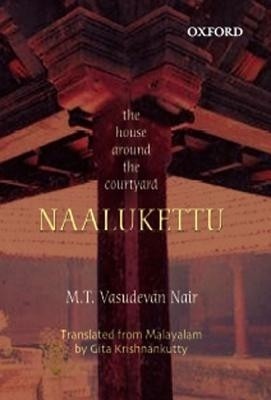
Naalukettu: The House Around the Courtyard by M. T. Vasudevan Nair, translated from Malayalam by Gita Krishnamurthy
Set in the South Indian state of Kerala, among the matrilineal Nair community, the novel follows the life of Appuni, whose mother is asked to leave the house for marrying against her family’s wishes. Appuni grows up listening to stories about his wealthy, powerful, upper-caste family, and the large house around the courtyard where the family lived. When he goes to claim a place in that location, he is rejected, which plants the seeds of revenge in his heart. This is considered a classic in Indian literature, and it’s hard to believe that it was M. T. Vasudevan Nair’s first novel (which also won him the Kerala Sahitya Akademi Prize in 1959).
The First Promise by Ashapurna Debi, translated from Bengali by Indira Chowdhury
The first installment in a mammoth trilogy, this novel follows the life of child-bride Satya in 19th-century India. Rebellious, feisty, always questioning, Satya never loses an argument: why are women not allowed to read when the deity of knowledge is a woman who sits on a swan? Why can’t I call a British doctor to treat my husband who is suffering from typhoid? Why wouldn’t widows be allowed to marry? Set amid the growth of nationalist anti-colonial consciousness in colonial Bengal, the novel is about the domestic history of women who carried the “first promise” of hope and change for a progressive, liberal future, who are forgotten by public history. “My novel leans on the backbone of petty, daily activities,” Ashapurna Debi, who produced more than 150 novels, wrote in the introduction to the novel’s Assamese edition.

Sonam by Yeshe Dorje Thongchi, translated from Assamese by Mridula Baroaah
Set among the Brokpas, a polyandric indigenous community, this a fiercely feminist, women-centric novel. The central character, Sonam, chooses to have two men in her life because her husband Lobjang, the love of her life, has to live away from home for long durations to earn for the family. It is hard for Sonam to deal with her loneliness and desires, and she decides to opt for a second husband after discussing with Lobjang. Like most love triangles, this leads to conflict, tragedy, and reconciliation. Often compared with Chinua Achebe, Yeshe Dorje Thongchi is a writer from Arunachal, who belongs to the small Serdukpen tribe that numbers no more than 4,000.
Zindaginama by Krishna Sobti, translated from Hindi by Neel K Mani
I love a good plot, but I couldn’t make this list without including this unruly novel that defies all expectations. I wonder if Zindaginama, which means the saga of life or the story of life, baffles us deliberately by mimicking the messiness of life in the best possible way? Sobti’s magnum opus is set in a small village in Punjab. If you pick this novel hoping to get a narrative thread that you can follow through the nearly 500 pages, you would be disappointed. But if you allow yourself to experience the sounds, the mingling, coalescing narrative threads, you would experience an intimate portrait of life in India before partition where many communities lived together for generations, with comparatively less acrimony and hatred!
Those Days by Sunil Gangopadhyay, translated from Bangla by Aruna Chakravarti
Those Days, set in colonial Bengal, charts the life of many historical and fictional characters who worked towards the reformation of India. If you have enjoyed sprawling novels such as Anna Karenina you will enjoy this novel, but it is much more than that: the plot is tighter, faster; the details are meticulous; the characters unforgettable. Even the historical characters feel fresh and new in Gangapadhyay’s writing. It is a historical novel, but becomes far more than the portrait of an era when India was entering modernity since you will remember the novel for life of the protagonist Nabinkumar, who is in the middle of these changes.
The Hour Before Dawn by Bhabendranath Saikia, translated from Assamese by Maitreyee S. C.
Occasionally, an Indian writer in English will emerge and claim that it is daring to write about poverty in India. What surprises me most is that there are thousands of novels set in India that are about poor people and their problems. The characters are in The Hour Before Dawn are poor, living in rural India, but their poverty is not a plot device. Menoka, the protagonist, is involved in an extra-marital relationship with the local petty thief. The novel explores the transgressions of Menoka and the costs she would pay for it, along with providing a meticulous picture of rural India.
The Gift of a Cow by Munshi Premchand, translated from Hindi by Gordon C. Roadarmel
Comparable with Dickens, Balzc, or Gorky, Munshi Premchand wrote fiction about the poor peasants and their desires, aspirations, and struggles in colonial, semi-feudal India, in the critical-realist mode. In this novel, Hori, a peasant, is tired of living in poverty and starts hoping to own a few acres of land and a cow so that he can cultivate on his own. In a narrative that challenges caste, colonialism and class, Premchand tells us in great details why Hori’s dream remains unfulfilled.
Cuckold by Kiran Nagarkar, translated from Marathi by the author
Author’s note: After publication, I found that though Nagarkar wrote some of his works in Marathi, Cuckold was originally written in English, then translated to Marathi by Rekha Sabnis and published by Popular Prakashan, Mumbai. For a Marathi-original novel, try one of Nagarkar’s earlier works such as Seven Sixes are Forty-Three (originally Saat Sakkam Trechalis), translated by Shubha Slee and published by Katha (2004)
Cuckold challenges you to read it: for its massive brick-like size and length, its rich imagination of the sixteenth-century kingdom of Mewar, and the difficult subject matter about a beloved mystic poet called Meerabai who was so obsessed with her love and attachment to the God Krishna that her husband felt abandoned. It is hard not to know about Meerabai or listen to her songs if you have grown up in India. Nagarkar chooses to narrate the novel from the point of view of her husband, Maharaja Kumar, providing the portrait of a complex person, statesman, husband, son; and yet, the novel manages to tell us a lot about Meerabai, and fall in love with her once again.
The Crooked Line by Ismat Chughtai, translated from Urdu by Tahira Naqvi
Written by one of my favorite fiction writers, The Crooked Line explores the life of Shaman, growing up in a North Indian Muslim household around the time of India’s independence. Chughtai, known for her controversial queer love story “Lihaaf,” wrote often about the experience of regular Muslim women in India. Like many of Chughtai’s earlier heroines, Shaman is rebellious, doesn’t do things that the society expects her to do as a woman, and even desires women in the novel. Part of the Progressive Writers Movement that started before Indian independence, Chughtai uses the form of the novel and the social realist mode to critique idiosyncrasies and conservative attitudes of Indian Muslims. It is a delight to read Chughtai’s fiction: with her quick, lively dialogues, layered but colloquial narration, and tinge of humor, she is one of the finest.
Samskara: A Rite for a Dead Man by U. R. Ananthamurthy, translated from Kannada by A. K. Ramanujan
Originally written in Kannada, and translated by the MacArthur “genius grant winner” A.K. Ramanujan, this book is part of almost all Indian literature classes. Set in a Southern Indian village in the state of Tamil Nadu, Samskara explores the stringent and puritanical traditions of an upper-caste Brahmin community in modern India. Praneshacharya, the main character, is married to a disabled woman. He takes care of her, more out of a sense of duty, than love, and believes that he is leading a virtuous, moral life. But when Narranappa, the rebellious man from this village who rejected the age-old traditions dies, Praneshacharya’s loyalty to the Brahmanical traditions start to wither away until he finds himself in a surprising path of transgression, doing things he never thought he would ever do. U. R. Ananthamurthy was nominated for the Man Booker International Prize and this novel.
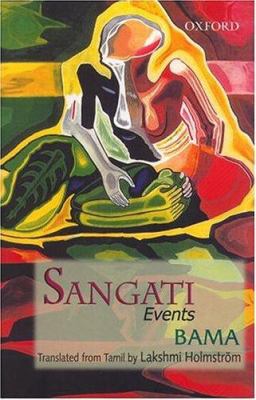
Sangati: Events by Bama, translated from Tamil by Lakshmi Holmstrom
Made up of a series of anecdotes or vignettes, Sangati is another novel that seeks to defy the conventions of the novel form. These anecdotes often celebrate the lives of Dalit women from the Periyar community in the state of Tamil Nadu and are juxtaposed with deep analysis and reflections in the narrator’s voice. This is one of the most important texts that informed Dalit feminism in India.
River of Fire by Qurratulain Hyder, translated from Urdu by the author
Hyder’s magnum opus is an astonishingly ambitious book. The story starts in the ancient city of Sravasti in the 5th century BCE during Buddha’s lifetime, and ends in modern India at the cusp of independence in the city of Lucknow. Covering multiple epochs through a wide cast of characters in the sub-continent, the book follows the same set of characters through different periods, using them as canvases to depict the moral, philosophical, literary and intellectual tussles of those eras, and perhaps to suggest a long, continuous subcontinental intellectual tradition.

